List of Authors
>>About this blog
Recent blog post
|
[May rain George]
September 8, 2017 09:00
On the opposite side (northeast side of the National Cancer Center) across Shin-ohashi-dori St. from the Tsukiji Outer Market where the fire broke out in August, there is Ichiba Bridge Park in Chuo Ward.
In a corner of the park, there is a monument to "The birthplace of Tokyo blind school, the land of Japan Braille enactment".
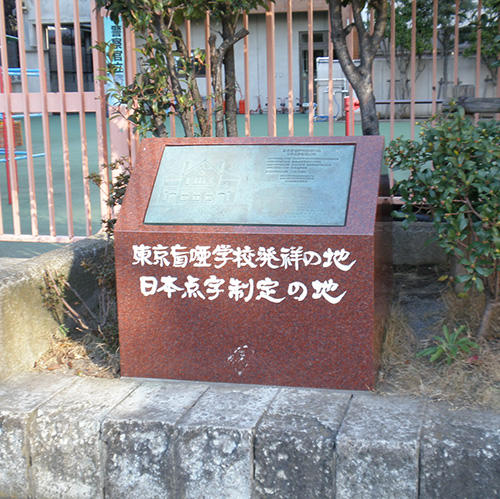
The following characters are engraved on this monument.
The birthplace of Tokyo blind school
Location of Braille in Japan
Completed the school building designed by Josaiah Condor in 1879 (Meji 12)
1880 (Meiji 13) Opened as the Rakuzenkai Kunblind House.
1887 (Meiji 20) Transferred to the government and renamed Tokyo School for the Blind
1890 (Meiji 23) Established Braille in Japan
November 1, 2010 (2010) Tateyuki
Special Visual Support School attached to the University of Tsukuba
The University of Tsukuba Special Needs School for Hearing
Monument Executive Committee
This monument is made in an easy-to-understand manner for the visually impaired. The red granite is fitted with bronze with the shape of the school relief, and the chronology of Braille and ink letters is written. The design, letters, bronze production, etc. of the monument seems to have been supported by people from the Department of Arts, Graduate School of Human Sciences, the University of Tsukuba.
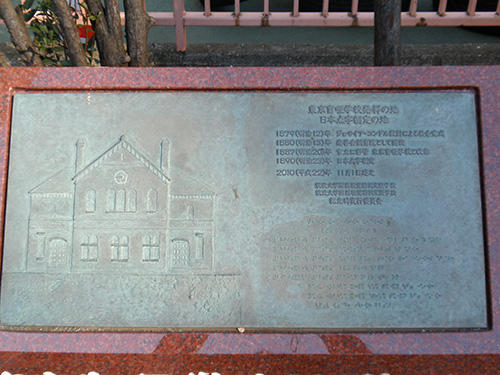
Looking at the education of people with visual and hearing impairments in Japan, in 1873 (Meiji 6), deaf education began at elementary schools in Kyoto, and blind education began several years later. After that, I became the Kyoto Prefectural Deaf School.
In Tokyo, the movement to establish a blind education facility began in 1875 (Meiji 8), and in 1880 (Meiji 13), the Rakuzenkai Kun Blind Hospital was opened, and at the same time deaf education is being conducted. Later, in 1885 (Meiji 18), it became under the direct control of the Ministry of Education and changed its name to "Tokyo School for the Blind". After the war, it became an affiliated school of Tokyo University of Education, and now it is the University of Tsukuba Special Visual Support School and the University of Tsukuba Special Hearing Support School.
The six-point "Braille" of 2 x 3 was devised in 1890 (Meji 23) by Kuraji Ishikawa of the Tokyo Blind School. This has been established as "Japan Braille" and is currently widely used in Japan.
Location of the monument "The birthplace of Tokyo School for the Blind, the land of the establishment of Braille in Japan"
4-15-2 Tsukiji, Chuo-ku, Tokyo, in Ichiba Bridge Park
Nearest station Tsukiji Station or Higashi-Ginza Station on the Hibiya Line, Tsukiji Market Station on the Toei Oedo Line
[May rain George]
August 4, 2017 18:00
I went to "Rika-chan Castle's Little Show".
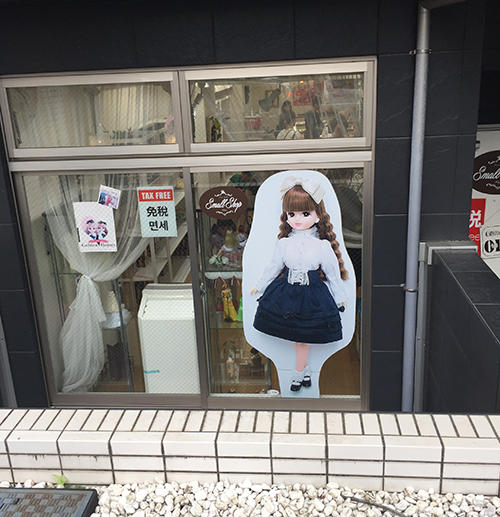
This shop is an "integrated doll production open factory" in Ono-cho, Fukushima Prefecture (appearance is like a Western castle!) Little Factory Co., Ltd., which operates, obtains Takara Tommy's license and manufactures original Rika-chan dolls and sells a selection of products only for this shop.
When I entered the store, many shop original Dole, dresses, and accessories were greeted me. Despite the afternoon on weekdays, many customers, including young women and women with children, are picking up products. Customers can create their own Rika-chan, so the eyes of choosing products are the sword itself. When I visited the shop, it was said that male customers were often visiting the store.
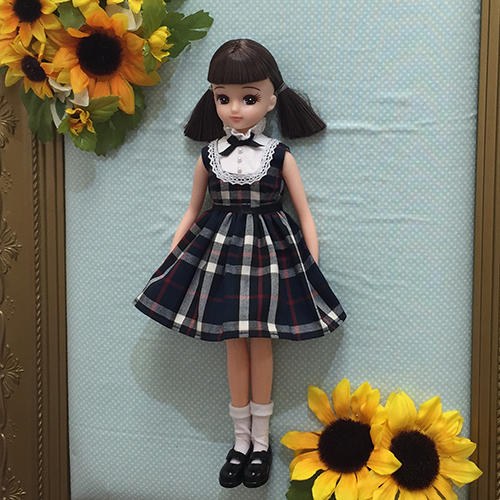
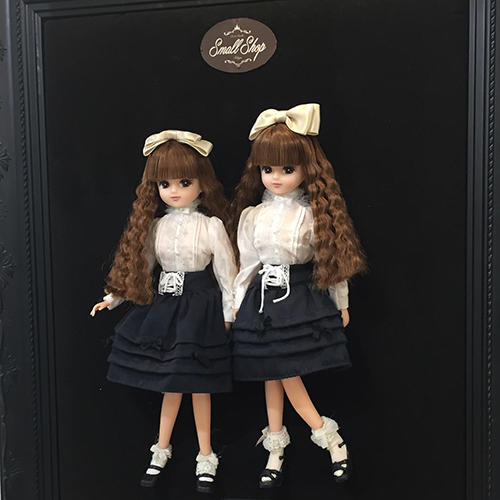
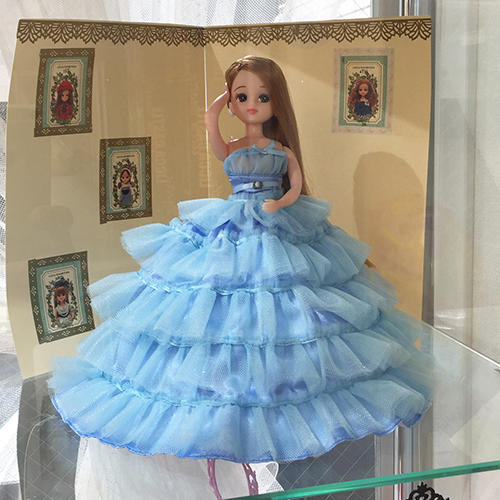
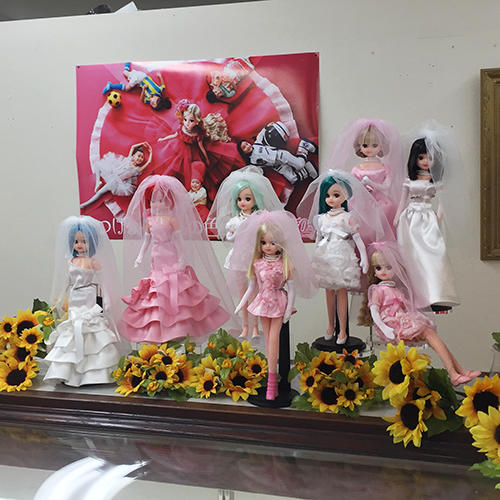
In addition, this shop also handles "Jenny" Dole, which has already been sold by manufacturers.

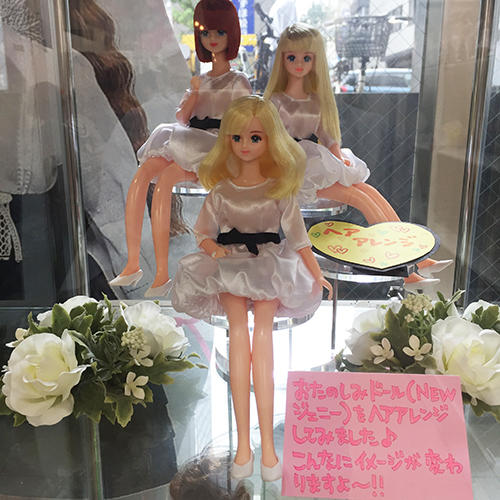
In addition, my recommended product is Rika-chan ramen (immediate Chinese noodles)! There are two types, "Kitakata Ramen" in red bag and "Shirakawa Ramen" in white bag. It's a taste that you can't taste with other bag noodles. I often use it as a souvenir for my friends, but most of them are repeaters saying "Delicious!" The secret of that taste was that Rika-chan Castle President Kondo's commitment to the thorough taste. When I asked the clerk, the president repeatedly tasted the prototype of ramen several times, and finished it with a satisfactory taste. Rika-chan Castle in Fukushima Prefecture is sold at our shop, and it seems that it can also be purchased at online shops.
(→http://www.liccacastle-shop.com/liccacyan/7.1/LFKR-14001/)
I've bought 5 bags each today!
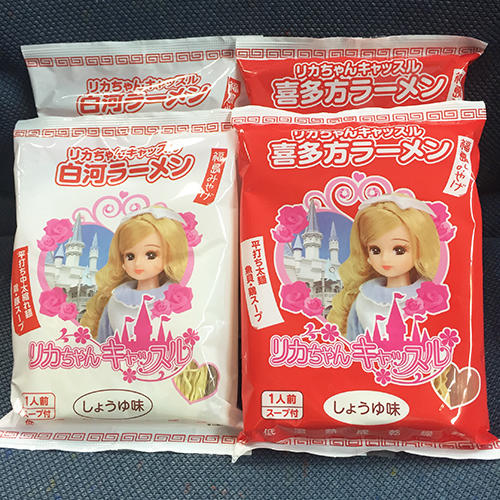
The only Dole shop in Chuo-ku, one of the most famous dolls in Japan, full of originality in Japan, is "Rika-chan Castle's Little Show". Why don't you visit it with your friends and family once?
※Mr. Takahashi, a public relations officer of Little Factory Co., Ltd. (Rika-chan Castle), provided cooperation in the interview. Thank you very much.
Store Information
Location 18-10 Nihonbashi Koamicho, Chuo-ku, Tokyo J SQUARE Building B1 (half-underground)
Phone: 03-5614-0959
[Business day and time] From Tuesday to 12:00 to 20:00 (excluding New Year holidays)
Access A 5-minute walk from Exit A6/A5 of Ningyocho Station on the Toei Asakusa Line / Hibiya Line
5-minute walk from Exit B6 in front of Mitsukoshi on the Ginza Line/Hanzomon Line
[May rain George]
July 4, 2017 18:00
In Chuo-ku, there are many bridges due to the current Sumida River, Nihonbashi River, and Kamejima River, which have already been reclaimed and canals in the coastal area. There are various faces on the streetlights of the bridge as many as that number. This time, I would like to see the streetlights of several bridges.
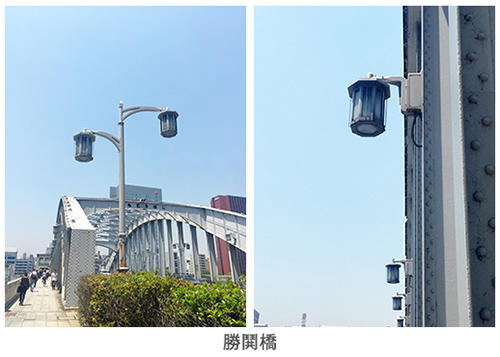
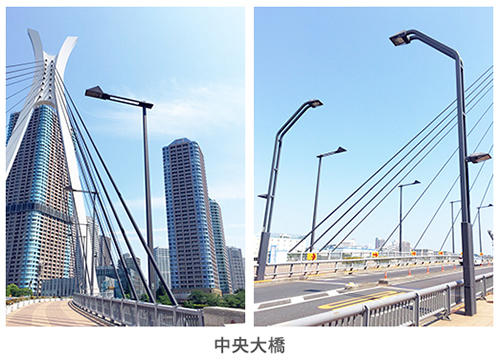
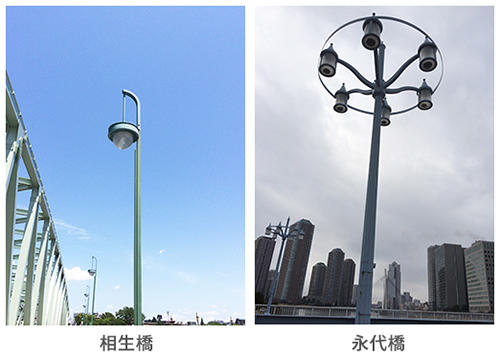
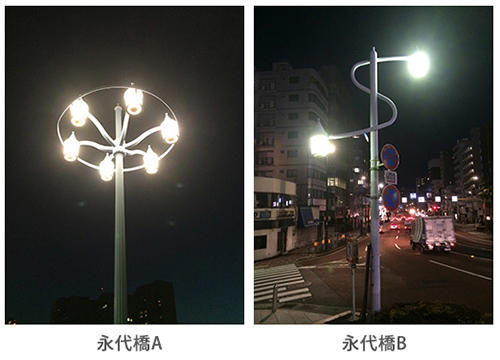
It is a streetlight on the Eitai Bridge that stands out for its uniqueness.
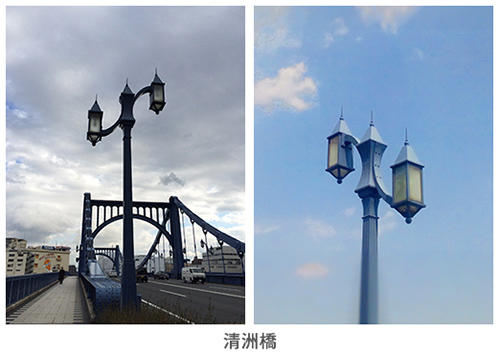
The streetlights at Kiyosu Bridge are one of my favorite designs.
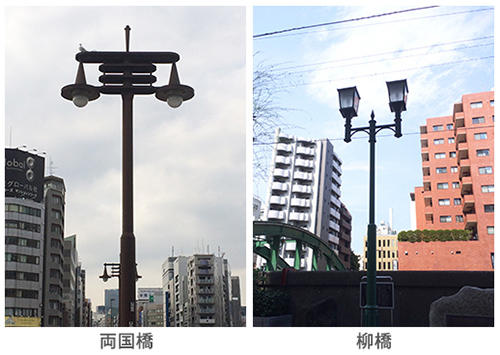
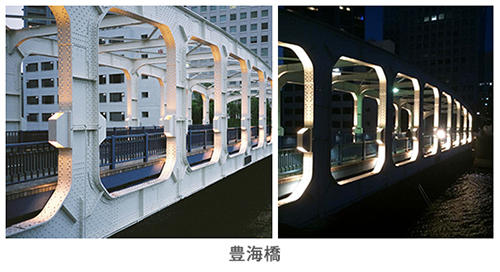
The streetlights that illuminate the road of Toyomi Bridge are attached to the beams of Hashigami.
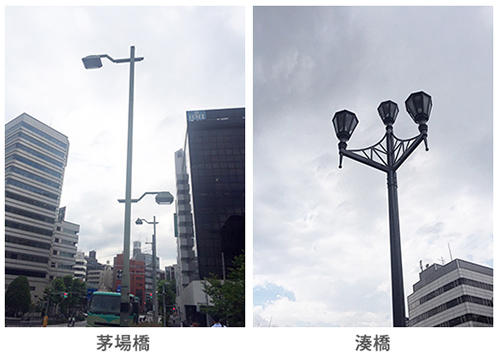
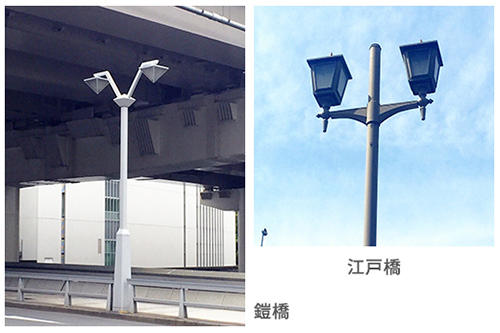
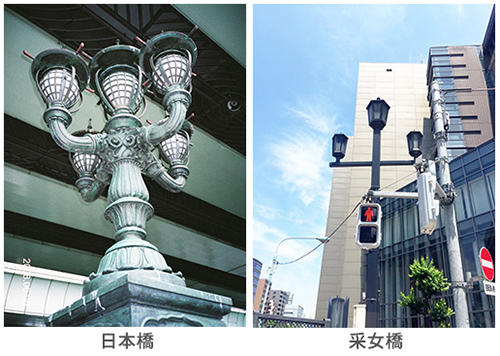
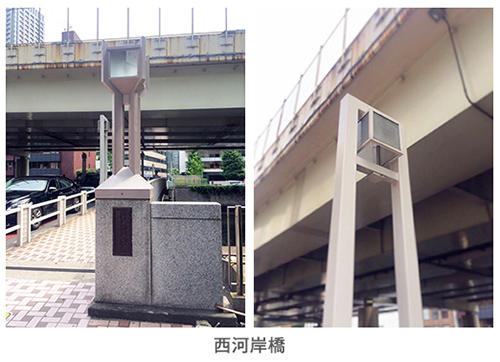
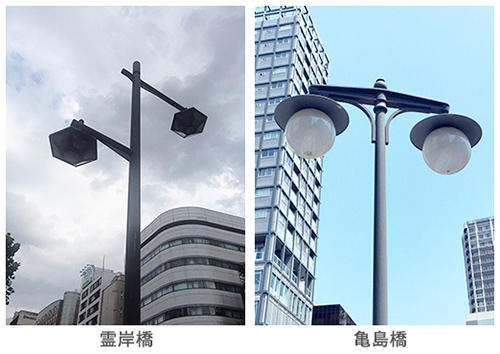
The next time is a streetlight at a famous spot in Chuo-ku. Please look forward to it.
[May rain George]
June 15, 2017 09:00
Chuo-ku is home to many famous places, historic sites and famous shops. The streetlights that change the face with the times brightly illuminate each place and the night on the road connecting each other. In addition to the main street, you can also see original streetlights on shopping streets and historic streets.
This time, some of the streetlights illuminate the current streets of Chuo-ku are introduced with photos.
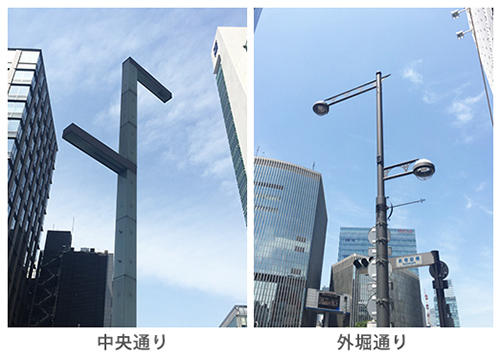
Compared to the geometric urban design streetlights on Chuo-dori, Sotobori-dori St., which intersects on it, has analog lights as motifs.
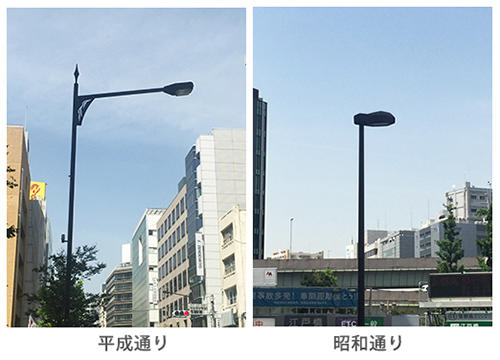
Both Heisei and Showa are streetlights with a simple design.
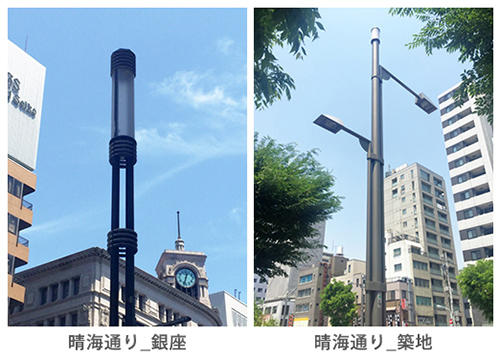
Harumi-dori St. can be broadly divided into two types of streetlights on the Ginza side and Tsukiji side.
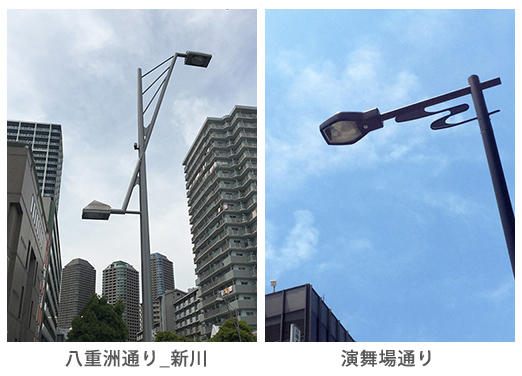
There are streetlights on Yaesu Street from Tokyo Station to Aioi Bridge, and streetlights around Shimbashi Enbujo.

On the streetlights of Miyuki Street, there is a golden statue where a phoenix is about to fly off. This is related to the name "Miyuki Street". There are various theories about the name Miyuki-dori, but the following theories seem to be correct given that this road was made in the Meiji era. It is said that when Emperor Meiji went to Naval Academy or used Hamarikyu, this road was designated as a march road, so it came to be called "Miyuki-dori". It is said that gold phoenix was decorated only on the streetlights in order to show His Majesty's formal style.

Oh, the streetlights on Ginza Suzuran Street weren't square in the past? Suzuran Street extends southwest across Harumi-dori St., and Gaslight Street extends northeast. I like the streetlights on the gaslight street.
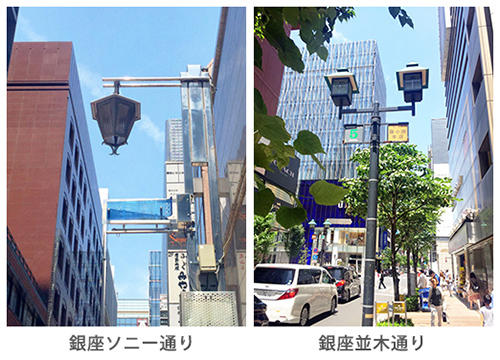
Both Sony Street and Namiki-dori St. use retro-design streetlights. That's good.
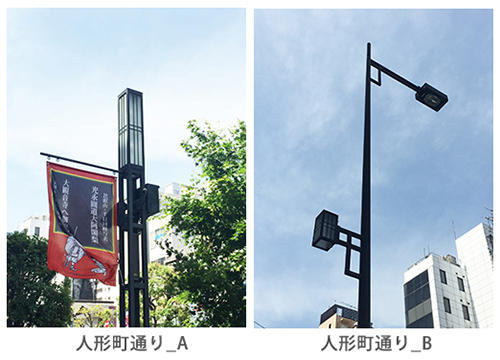
Ningyocho Street has B standing every few based on A.
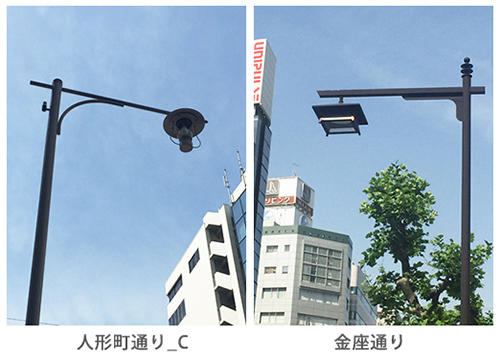
On the north side of the Ningyocho intersection on Ningyocho Street is a streetlight C. From the east side of the intersection, Koza-dori in Hamacho is the streetlight on the right.
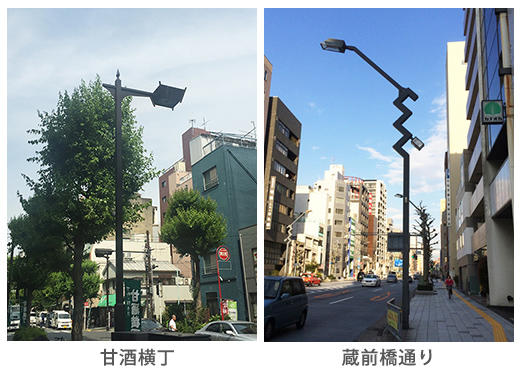
About 400 meters from Ningyocho-dori to Meijiza is amazake Yokocho. On Kuramaebashi-dori St., which passes through Chuo-ku, you can see another streetlight with a similar design.
※Next time, I will send you a "bridge streetlight". Please look forward to it!
[May rain George]
May 11, 2017 12:00
Chuo-ku, Tokyo is the second largest in the 23 wards (minimum is Taito-ku), the second largest from the bottom. Although it is such a small area, including bridges that span the Sumida River, Kanda River, Nihonbashi River, Kamejima River, canals, etc. that flow through the ward, bridges that remain at places that have been reclaimed and become capital expressways and ward roads, etc. There are more than 70 bridges.
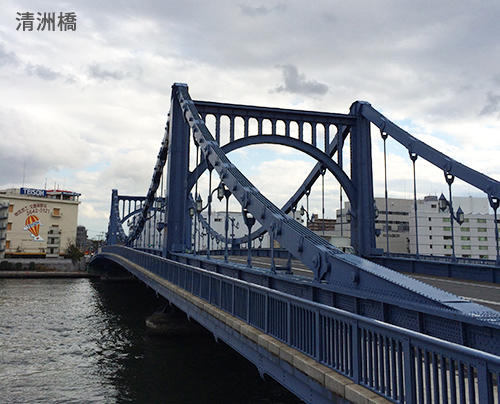
I have loved "bridges" for some reason since I was a child, and no matter where I go, I want to cross and I can't stand it. When I was a junior high school student, my research topic for summer vacation was "bridge investigation" of Arakawa flowing through Saitama Prefecture and its tributaries, and the name of the company I made with my friends in Saudi Arabia is "○○○ bridge". A few years ago, when someone who sees the past and the future saw my ancestors' profession, I was told that he was a craftsman who designed and built bridges.
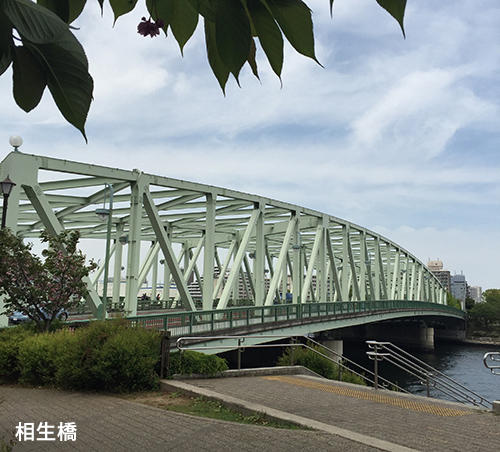
Well, it's a good time. As for the name of the bridge, in many cases one of the main pillars of the bridge is written in kanji and the other is written in kana. In the case of Nihonbashi, "Nihonbashi" and "Nihonhashi". That's not "Nihonbashi" but "Nihonbashi". It's not a muddy sound. If you go to another bridge, Edobashi is "Edohashi" and armor bridge is "Yoroihashi". The main pillar of Kyobashi, which still remains, is "Kiyauhashi", and the shipping bridge is "Kaiuhashi". You can see Shinohashi and Harumi Ohashi.
There was a reason for this. It is said that the person who built the bridge carved the letters with the wishes and prayers of the people so that the flow of the river flowing below would not be clear and cloudy forever. Of course, bridges that have been replaced or newly built, such as "Kayaba Bridge" and "Aioi Bridge", also have muddy notation, but when examined, all old bridges were written in Kiyone.
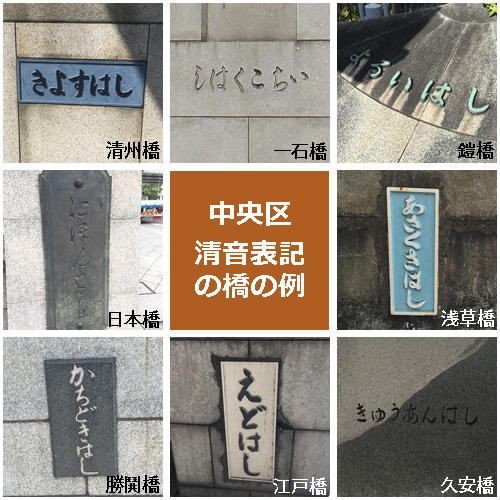
The name of the bridge was also filled with people's prayers and wishes.
[May rain George]
April 26, 2017 16:00
This week, the long-awaited sale of Kashiwa mochi has started at Shigeru Chizuki.
This shop's Kashiwa-mochi is sweet and sweet. The rice cake that is not too soft has a reputation for being delicious. The wrapping method is a type that wraps rice cake on the front of the leaf (some shops wrap it on the back), and it costs 150 yen each.
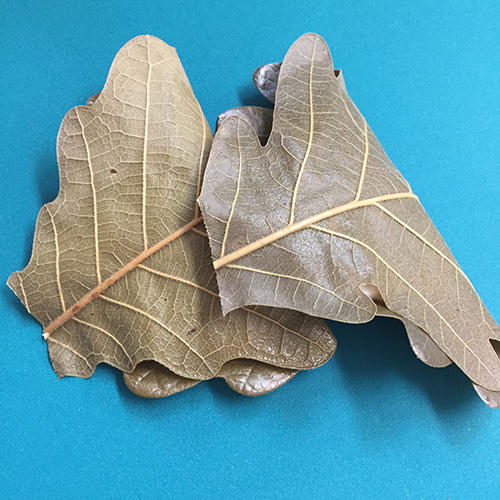 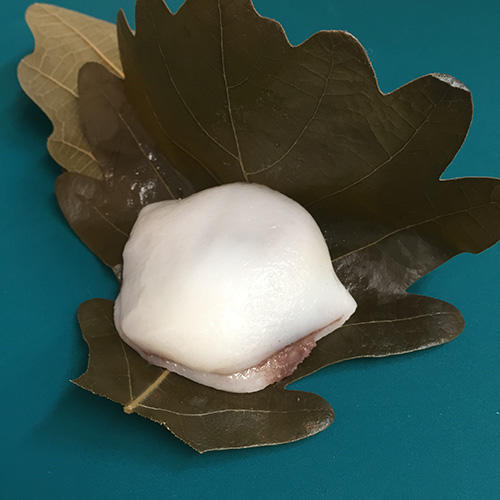
"Shigeru Chizuki" beside Hamacho Park is a small Japanese confectionery shop known to those who know it. The exterior doesn't look like a shop.
There are handwritten "Dorayaki" and "Kashiwa Mochi" paper on the entrance. The first person may be a little difficult to enter.
The standard Japanese sweets are dorayaki, in the middle, chestnut bun. It is seasonal, and Sakura mochi and Kashiwa mochi are added.
In particular, dorayaki (160 yen) is large enough to think how to put it in a bag (135g when measured!) It's good to eat.
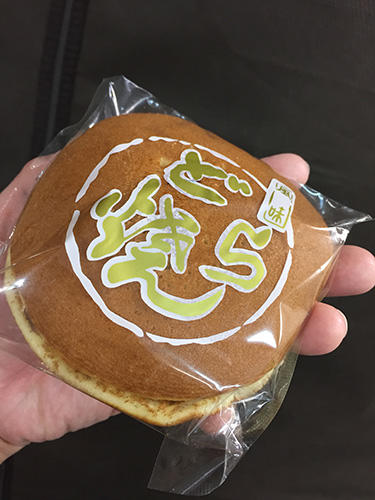
I asked Mr. Mochizuki, the master of the appearance of craftsmanship.
"How do you put this dorayaki in a bag?"
Then the master broke his expression and said, "Once you take it out of the bag, you will not enter anymore."
And this question was distracted.
Shigeru Chizuki (business hours) 9: 30-18: 00 (regular holidays) Saturdays, Sundays and holidays
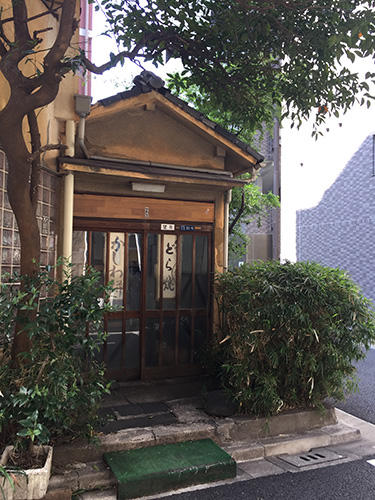
Chuo-ku is a city with many Japanese confectioneries.
Dorayaki is famous for its famous Kiyokazuken (Horidomecho) and Usagiya (Nihonbashi) in addition to Chizuki Shigeru. In addition, "Hikokuro" (amazake Yokocho), Kintsuba's "Umekatei" (Kodemmacho) and "Eitaro Sohonho" (Nihonbashi), Taiyaki's "Yanagiya" (amazake Yokocho), golden potato "Judo" (Ningyocho), "Tachibana" of Karinto (Ginza).
Everyone, please find your own delicious Japanese sweets shop in Chuo-ku.
|
Links
|


























